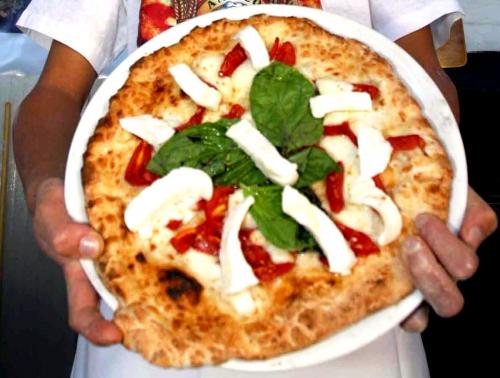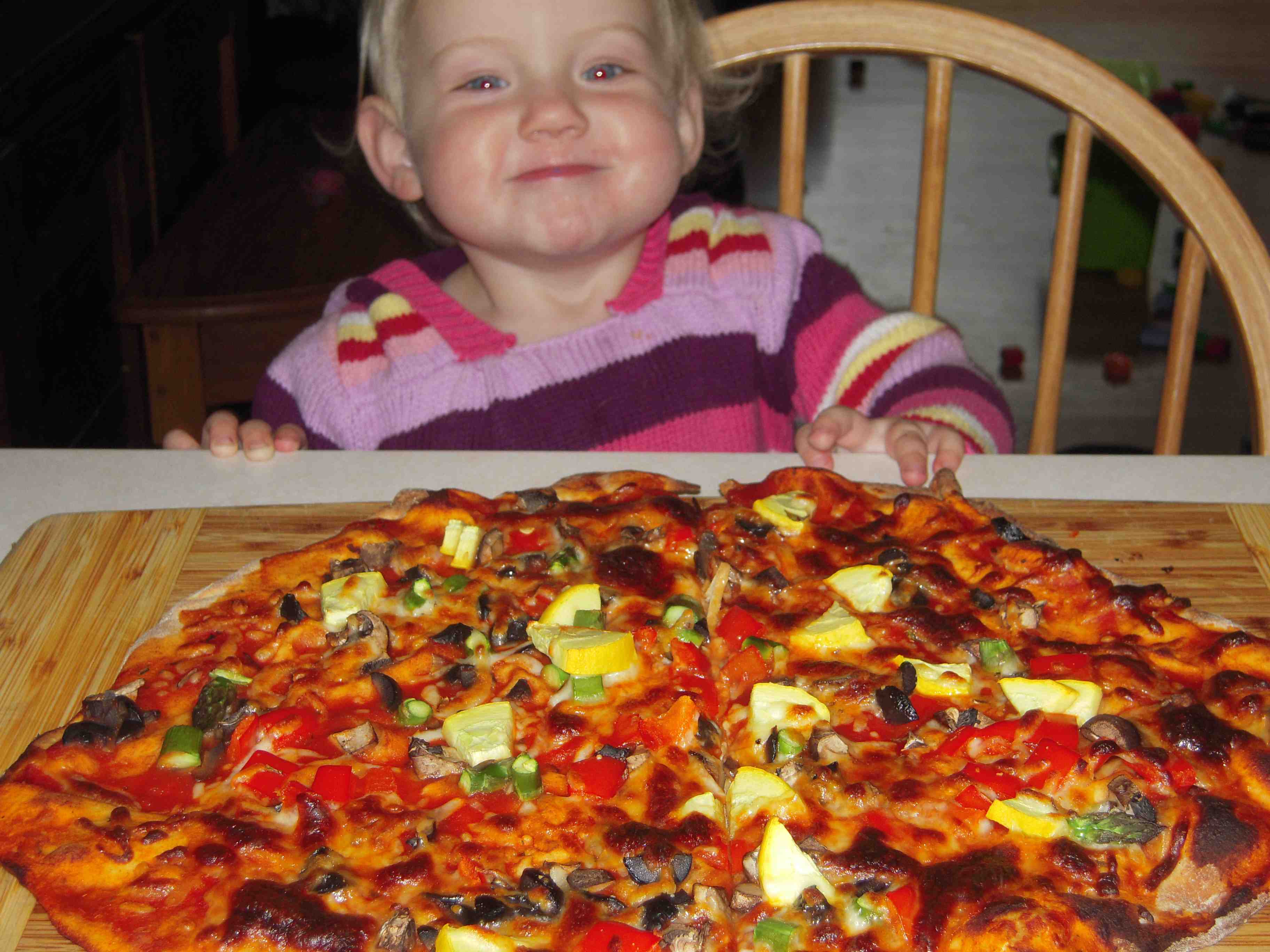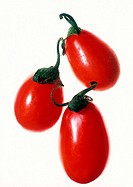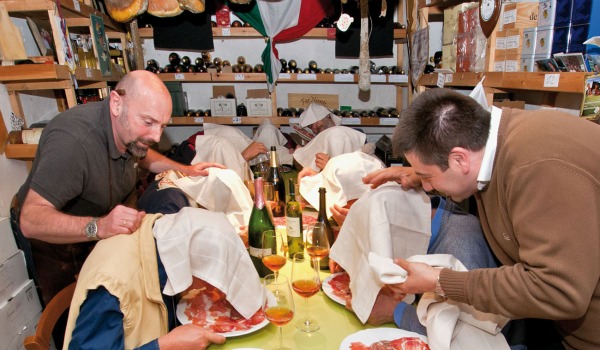I went to Naples, Italy once. For a weekend. One of the weirdest meetings I ever attended.
 But it was free. And all we did was eat and drink. Sorta like that Sopranos episode where Tony and Pauley and Chrissy go to Naples for business connections and to tour the old world.
But it was free. And all we did was eat and drink. Sorta like that Sopranos episode where Tony and Pauley and Chrissy go to Naples for business connections and to tour the old world.
The G7 economic summit was to be held in Naples in July, 1994. Someone had the bright idea that a scientist and a journalist from each of the G7 countries should go to Naples beforehand to have a G7-like summit on enhancing communications with cancer patients.
I was over a year into my PhD studies, and had been writing somewhat regularly on science stuff for the Globe and Mail newspaper in Toronto, someone got my name, organizers decided I could handle the scientist and journalist part, so I was off to Naples as the Canadian representative.
I remember everything vividly, probably because the trip was so short. Flight from Toronto to Rome, train to Naples, arrived Friday afternoon. Dinner with some of the others Friday night, first meeting Saturday morning. Five minutes in, and a couple of the Italians were posturing, giving sermons for a couple of hours. I looked befuddled, so the American and British representatives took pity, and one told me, “this is what they do.”
This was followed by a huge lunch, maybe two more hours of meetings, then an elaborate dinner at a restaurant on an island off the coast of Naples. A couple of hours of meetings in the morning, where me, the Americans and the Brits said, doctors should be honest with cancer patients and tell them what’s going on, while the reps from the other countries said, we can’t do that.
Another large lunch, airport, home.
 I’d love to go back, and Italy is on the travel list for me and Amy and Sorenne now that Amy has entered sabbatical land. But I’m not sure about that Naples pizza.
I’d love to go back, and Italy is on the travel list for me and Amy and Sorenne now that Amy has entered sabbatical land. But I’m not sure about that Naples pizza.
The daily newspaper, Il Giornale, reported today that Italian prosecutors believe pizza in Naples may be baked in ovens lit with wood from coffins dug up in the local cemetery.
"Pizza, one of the few symbols of Naples that endures … is hit by the concrete suspicion that it could be baked with wood from coffins," Il Giornale said on Monday.
Investigators in Naples are setting their sights on the thousands of small, lower-end pizza shops and bakeries that dot the city on suspicion that the owners may "use wood from caskets to keep ovens burning."
According to tradition, Neapolitan pizza should be cooked in a stone oven with an oak-wood fire.
Italy’s estimated 25,000 pizzerias employ around 150,000 people and account for a turnover of 5.3 billion euros ($A7.4 billion).
I use a pizza stone and a gas oven, but the result ain’t bad. Homemade pizza dough, about 30 per cent semolina flour, and 35 per cent each of whole wheat and white flour with garlic and rosemary from the herb garden baked into the dough. Tonight’s creation was topped with canned tomato sauce (same as the stuff in glass, half the price), mushrooms, red pepper, yellow squash, asparagus, olives and mozzarella cheese. Sorenne liked it.
Note: No graves were desecrated in the making of this pizza.

 one simple reason: globalization and industrialization of food industry."
one simple reason: globalization and industrialization of food industry."
 grown-ups from all over the country. The first patient became ill on Sept. 4, 2011, and the last on Oct. 14, 2011. During the same period, 14 cases in Germany and one in Austria were reported.
grown-ups from all over the country. The first patient became ill on Sept. 4, 2011, and the last on Oct. 14, 2011. During the same period, 14 cases in Germany and one in Austria were reported. placed over one’s head and the plate, deeply inhaling the porky perfumes, stimulating salivary glands and appetite. Remove napkin, taste salumi, and drink sparkling wine—Champagne, Italian sparklers, or Lambrusco. Then head for dinner. I felt renewed.
placed over one’s head and the plate, deeply inhaling the porky perfumes, stimulating salivary glands and appetite. Remove napkin, taste salumi, and drink sparkling wine—Champagne, Italian sparklers, or Lambrusco. Then head for dinner. I felt renewed. There was blue string soup in that Bridget Jones movie.
There was blue string soup in that Bridget Jones movie. The name of the discount chain that sold the cheese was not disclosed, because it had "managed the situation well" and immediately removed the cheese in question from its shelves, a police statement said.
The name of the discount chain that sold the cheese was not disclosed, because it had "managed the situation well" and immediately removed the cheese in question from its shelves, a police statement said. But it was free. And all we did was eat and drink. Sorta like that Sopranos episode where Tony and Pauley and Chrissy go to Naples for business connections and to tour the old world.
But it was free. And all we did was eat and drink. Sorta like that Sopranos episode where Tony and Pauley and Chrissy go to Naples for business connections and to tour the old world. I’d love to go back, and Italy is on the travel list for me and Amy and Sorenne now that Amy has entered sabbatical land. But I’m not sure about that Naples pizza.
I’d love to go back, and Italy is on the travel list for me and Amy and Sorenne now that Amy has entered sabbatical land. But I’m not sure about that Naples pizza.
 ANSA.it is reporting
ANSA.it is reporting Agriculture Minister Luca Zaia said Wednesday that worms were found in some of the fish seized across Italy between Dec. 10-23. In other cases, mussels defrosted months earlier were passed off as fresh, and fish coming from Asia was passed off as domestic.
Agriculture Minister Luca Zaia said Wednesday that worms were found in some of the fish seized across Italy between Dec. 10-23. In other cases, mussels defrosted months earlier were passed off as fresh, and fish coming from Asia was passed off as domestic.